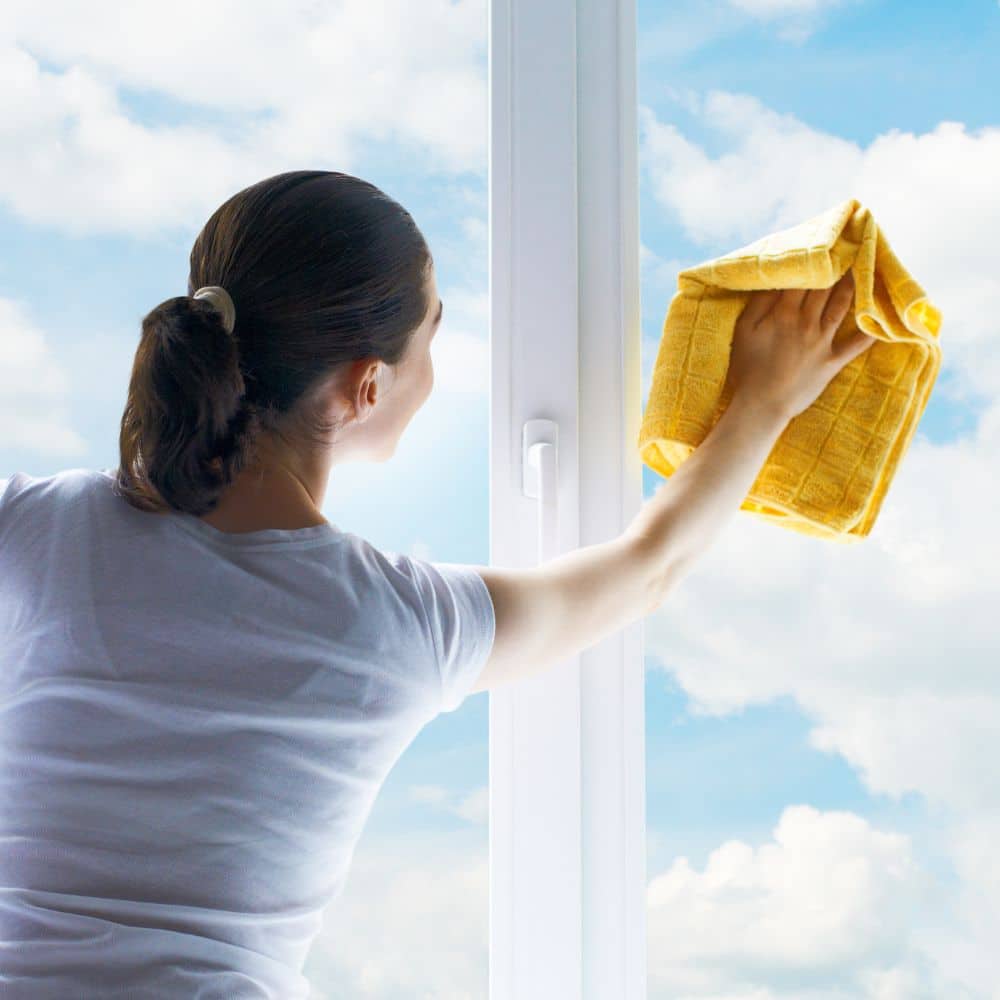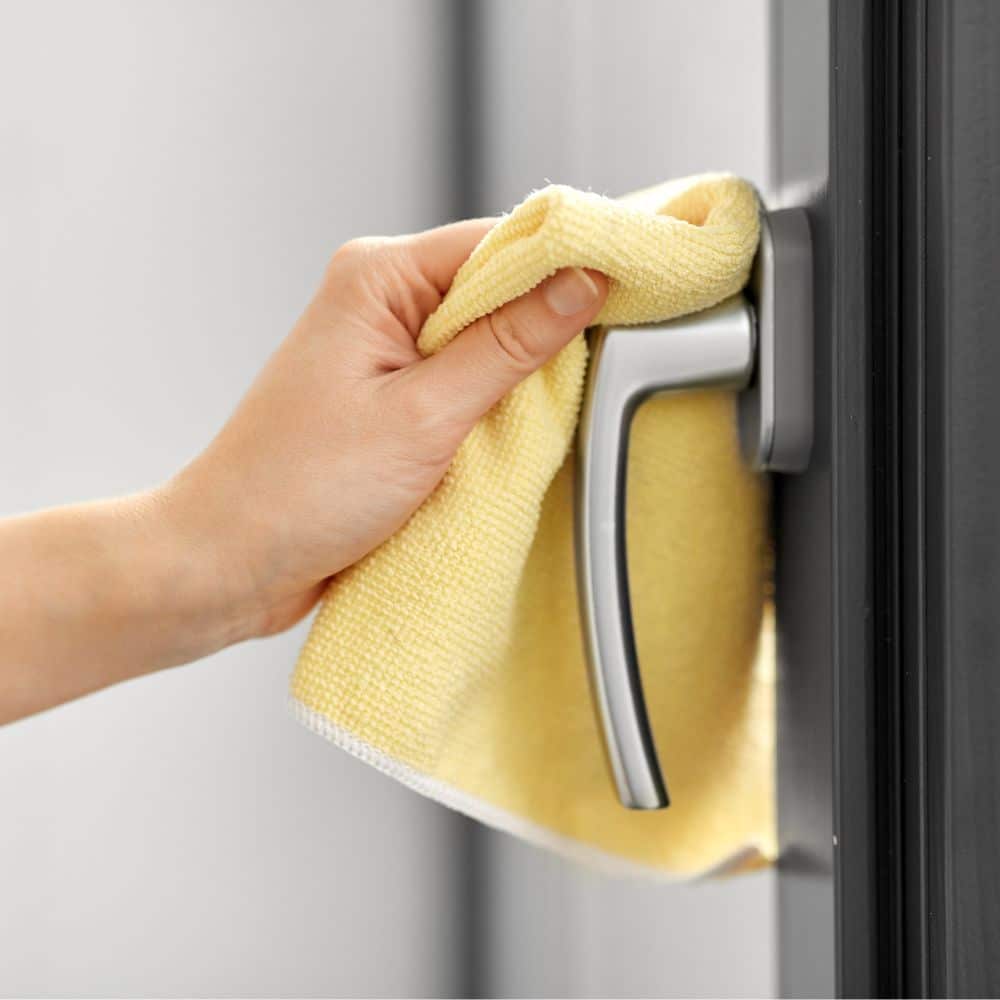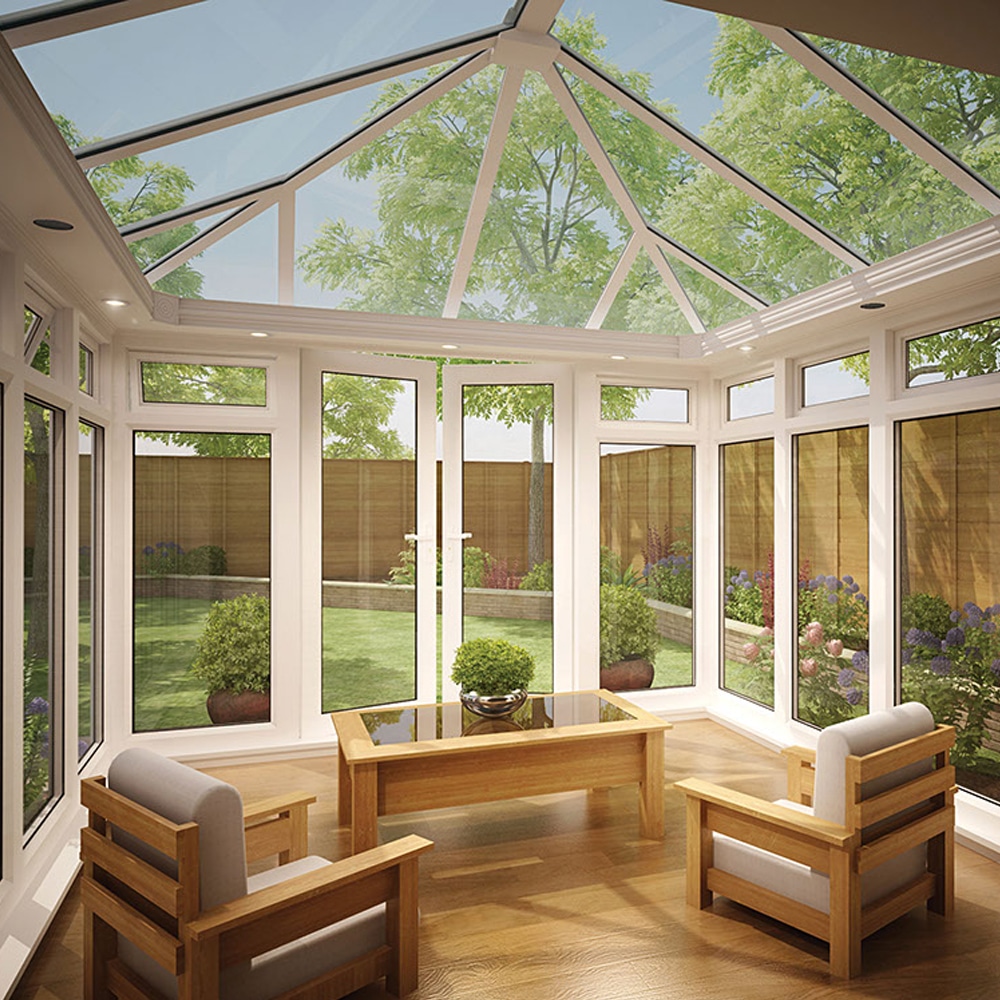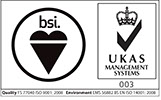Cleaning
Your new uPVC windows and doors are designed, manufactured and installed to the highest standards, improving not only your home’s appearance but also making it more secure, warm and comfortable.
New uPVC windows are extremely durable and long lasting and as a result will only require occasional cleaning and basic maintenance. By following these simple guidelines, they will give you years of trouble free use.
- An occasional wipe over with warm soapy water will give an “as new” appearance.
- Stains that are not removable with soapy water may be removable using a domestic nonabrasive cream cleaner. However, these should not be used to excess as they can affect the gloss finish.
- uPVC profiles never need painting. Should painting or repainting be desired then this should only be undertaken by suitably qualified companies. The use of incorrect paint types can seriously damage the surface.

Glass
Glass units should be cleaned with a good quality glass cleaner, again using a soft cloth or chamois leather which should be free of dirt or grit. Where glass has external coatings such as self-cleaning glass, please refer to the manufacturers guidelines.
For uPVC products with decorative finishes, for example woodgrain foils, the installer’s advice should be sought on which products are suitable for use.
ON NO ACCOUNT SHOULD SOLVENT BASED CLEANERS BE USED.
FAILURE TO FOLLOW THESE INSTRUCTIONS MAY INVALIDATE YOUR GUARANTEE
Vents and Ventilation
Your new windows will be much more energy efficient and draught-proof than your old ones and as a result will prevent heat as well as moisture from escaping. Where trickle vents are present in the window, they should remain open at all times. This will help prevent condensation and mould forming in the room and on
the windows.
External Condensation
Occasionally you may get condensation forming on the external pane of glass, this means their working to their full potential, it’s usually visible on cold, clear mornings, for instance in frosty weather. Condensation occurs because modern glass coatings and gas filled cavities have become so efficient at keeping the heat inside the room that warmth is not able to transfer to the external pane to heat it up. This is not a fault , the product is working to its full potential, and as the daytime temperature rises the external condensation will disappear.
Internal Condensation
When warm, moist air comes into contact with either a surface or air that is colder than it is, the warm air is unable to retain the same amount of moisture as it did and the water is released either into the cold air or onto the colder surface, causing condensation to form. This can be a particular problem in rooms where high humidity and water vapour is present such as kitchens and bathrooms. Ensuring you have ventilation such as trickle vents or simply opening a window can alleviate the issue.
Managing Condensation in the Home
The Facts
Everyday routines such as washing, cooking, drying clothes, and even just breathing releases moisture into the atmosphere. An average family of four can produce 24 pints (14 litres) of water vapour in just 24 hours, and all that moisture must go somewhere.
How to reduce condensation in the home
Reducing condensation starts by limiting the amount of humidity in the home. The less humidity in the air the less likely it is to condense on the windows and cold surfaces. These are several changes you can make to reduce condensation without worrying about measuring for humidity levels.
An adequate amount of heating in the property will improve the internal temperature of surfaces in the home and reduce the likelihood of condensation. Wipe down condensation on windows and sills or use a window vac as soon as it appears to reduce humidity and mould build up.
In the kitchen:
- Use pan lids when cooking
- Turn on the cooker hood to extract moisture
- Keep the doors closed where possible when cooking
In the Shower:
- Reduce shower time and lower the temperature Run the bathroom fan during the shower and for 15 – 20 minutes after
- Use bathmats to soak up moisture in the room (ensure these items are not left in the room)
- Keep doors closed whilst in the bathroom and ventilate
Laundry:
- Avoid drying laundry on a rack inside
- Keep tumble dryers in a well ventilated separate room with the doors closed – and limit use
- Ensure your washing machine is correctly vented
Other causes:
- Move furniture away from walls to allow for air circulation
- Check for water leaks around the home
- Make sure vents are installed correctly and lead outside
- Choose indoor plants that reduce humidity, such as Peace Lily, Boston Fern and Spider Plant
- Invest in a high efficiency and appropriately sized dehumidifier
- Watch for broken seals on windows and doors
Hardware
External hardware such as handles, hinges key cylinders, catches and restrictors have coatings and polished surfaces which can be restored by cleaning with a dry soft duster.
Take care not to scratch surfaces with jewellery such as rings and keys or hang items from handles. An occasional drop of light oil on hinges or moving parts is all you need.
ON NO ACCOUNT SHOULD SOLVENT BASED CLEANERS OR MULTI PURPOSE LUBRICANT BE USED.

Component Replacement
Replacement components should only be fitted by your chosen installer as the correct adjustment of the glazing, gaskets and hardware are critical to the performance of the overall product. The frequency of replacement will depend on many factors such as the environment and the level of care maintenance and use. It is likely that the uPVC frames will outlast all other components, if a frame is scratched or damaged, repairs may be possible. Contact your installer for advice.
ONLY TRAINED INSTALLERS SHOULD BE USED TO FIT OR ADJUST REPLACEMENT COMPONENTS.
Conservatory Maintenance
The roof and side frames of your conservatory should be washed every few months with soapy water. Avoid solvent- based or abrasive cleaners and never use power washers. Please refrain from standing on your conservatory roof as this is dangerous to yourself and can also damage your roof. Along with the other components of your conservatory, the gutters should be cleaned regularly to remove leaves and other debris. Do not lean ladders against the guttering, specialist ladders for use in the cleaning of conservatories can be hired at reasonable prices.
To reduce the risk of scratching your double-glazed units, we suggest removing jewellery prior to cleaning. Again, for washing, a simple soapy water solution should be adequate and can be followed by the use of any household glass cleaner.
Contact your chosen installer for more advice on product maintenance. Plastic Roofing and Self Cleaning Glass – please contact your installer for more information on maintenance.

General Maintenance
During routine cleaning it is advisable to check for damage such as abrasions, scratches, blocked drainage paths, signs of tampering, or faulty operation of hardware.
Should any damage be found advice should be sought from your installer.
CHECKING YOUR UPVC PRODUCTS ONCE A YEAR SHOULD BE SUFFICIENT ENOUGH TO KEEP THEM LOOKING THEIR BEST







